

ABOARD XIANGYANGHONG 09, Jan. 3 -- China's deep-sea manned submersible Jiaolong took 300 milliliters of hydrothermal fluid in two active hydrothermal vents and other scientific samples at the seabed of southwestern Indian Ocean on Friday.
The temperature of one active hydrothermal vent, which Jiaolong measured with a special probe in its iron hand, was 352 degree Celsius, said Yu Hongjun, chief commander of the expedition.
"This is a big step for Jiaolong as this is the first time the submersible did it," said Yu.
Detailed information and samples that Jiaolong collected will be very important for China's future polymetallic sulfide study and other scientific research, said Tao Chunhui, chief scientist of the expedition.
Besides, Jiaolong gathered 1.8 kg of sulfide, 2.3 kg of basalt, 15 spiral shells, one stalked barnacle and 8 liters of deep-sea water in this dive.
"We saw that lots of active hydrothermal vents alternated with inactive ones in this area." said Fu Wentao, pilot of Jiaolong, who celebrated his 32nd birthday in the dive.
As the topography of the polymetallic sulfide area was complicated, it was very hard to find a proper place for the submersible to rest, Fu said.
"The temperature of active hydrothermal vents is more than 300 degree Celsius, so I must keep the submersible away from the vents but I also need to get the submersible as close as possible to the vents to measure the temperatures and get samples," Fu said.
Hydrothermal sulfide is a kind of sea-bed deposit containing copper, zinc and precious metals such as gold and silver. Those metals formed sulfides after chemical reactions and settled at the seabed in "chimney vents."
Being on a 120-day expedition in southwest Indian Ocean, Jiaolong is scheduled to dive 20 times to study polymetallic sulfides, biological diversity, hydrothermal microbes and genetic resources.
 |
Day|Week

 Breathtaking buildings of W. Sichuan Plateau
Breathtaking buildings of W. Sichuan Plateau Graduation photos of "legal beauties"
Graduation photos of "legal beauties"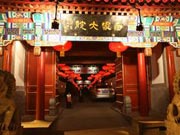 Top 10 most expensive restaurants in Beijing in 2015
Top 10 most expensive restaurants in Beijing in 2015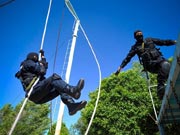 Special police force conducts multi-subject training in Urumqi
Special police force conducts multi-subject training in Urumqi 'Floating girls' in cheongsam
'Floating girls' in cheongsam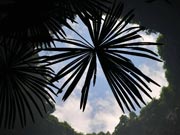 Mysterious crater discovered in central China’s Hubei
Mysterious crater discovered in central China’s Hubei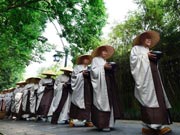 630 monks walk for charity in Hangzhou
630 monks walk for charity in Hangzhou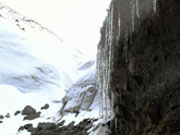 Glaciers on Qilian Mountains shrink 36 square km over 10 yrs
Glaciers on Qilian Mountains shrink 36 square km over 10 yrs